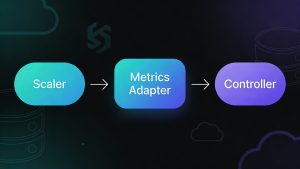In today’s fast-paced development environment, automating the deployment process for frontend applications has become crucial. This article explores how developers can leverage GitHub Actions in conjunction with Amazon Web Services (AWS) to create a seamless, efficient deployment pipeline for static websites.
The Challenge of Manual Deployments
Many developers face the tedious task of manually deploying their static websites hosted on AWS S3 with CloudFront caching. This process typically involves several time-consuming steps:
- Building the project locally
- Logging into AWS
- Clearing the S3 bucket
- Uploading new build files
- Invalidating CloudFront cache
- Testing and potentially repeating the process
This manual approach is not only time-consuming but also prone to human error. Fortunately, there’s a better way.
Enter GitHub Actions
GitHub Actions (GHAs) offers a powerful solution to automate the deployment process. It allows developers to define workflows that can be triggered by specific events, such as pushing code to a branch or opening a pull request.
Key Components of GitHub Actions:
- Workflows: Sets of automated jobs executed on specific events
- Events: Triggers that initiate workflows
- Actions: Predefined, reusable workflows
- Runners: On-demand servers that execute workflows
Crafting the Deployment Workflow
To automate the deployment of a static website to AWS S3 and CloudFront, developers can create a workflow file in their repository. This file, typically named .github/workflows/deploy.yml, defines the steps necessary for building and deploying the application.
The Workflow Structure
- Event Trigger: Define when the workflow should run, such as on pushes to the master branch.
- Environment Setup: Set up the runner and configure Node.js.
- Build Process: Install dependencies and build the project.
- AWS Configuration: Set up AWS credentials securely.
- Deployment: Sync built files to S3 and invalidate CloudFront cache.
Securing AWS Credentials
To interact with AWS services, the workflow needs secure access to AWS credentials. This is achieved through GitHub Secrets, which allow for the safe storage of sensitive information.
Steps to Set Up AWS Credentials:
- Create an IAM user in AWS with necessary permissions.
- Store the access key ID and secret access key as GitHub Secrets.
- Use these secrets in the workflow to configure AWS credentials.
The Deployment Process
Once the workflow is set up, the deployment process becomes fully automated. When changes are pushed to the specified branch, GitHub Actions takes over:
- The runner environment is prepared.
- Node.js is set up, and dependencies are installed.
- The project is built.
- AWS credentials are configured using the stored secrets.
- Built files are synced to the S3 bucket.
- CloudFront cache is invalidated.
This automation reduces deployment time significantly, often completing the entire process in about a minute.
Benefits of Automated Deployment
- Time Efficiency: Eliminates manual steps, saving developer time.
- Consistency: Ensures the same process is followed for every deployment.
- Error Reduction: Minimizes human errors in the deployment process.
- Version Control: Ties deployments directly to version control events.
- Scalability: Easily adaptable for multiple projects or environments.
Conclusion
By combining GitHub Actions with AWS, frontend developers can create a robust, automated deployment pipeline. This approach not only streamlines the development process but also aligns with modern DevOps practices, allowing teams to focus more on building features and less on operational tasks.
As the boundaries between development and operations continue to blur, tools like GitHub Actions become invaluable. They empower developers to take control of their deployment processes, fostering a more agile and efficient development lifecycle.
Read more such articles from our Newsletter here.



